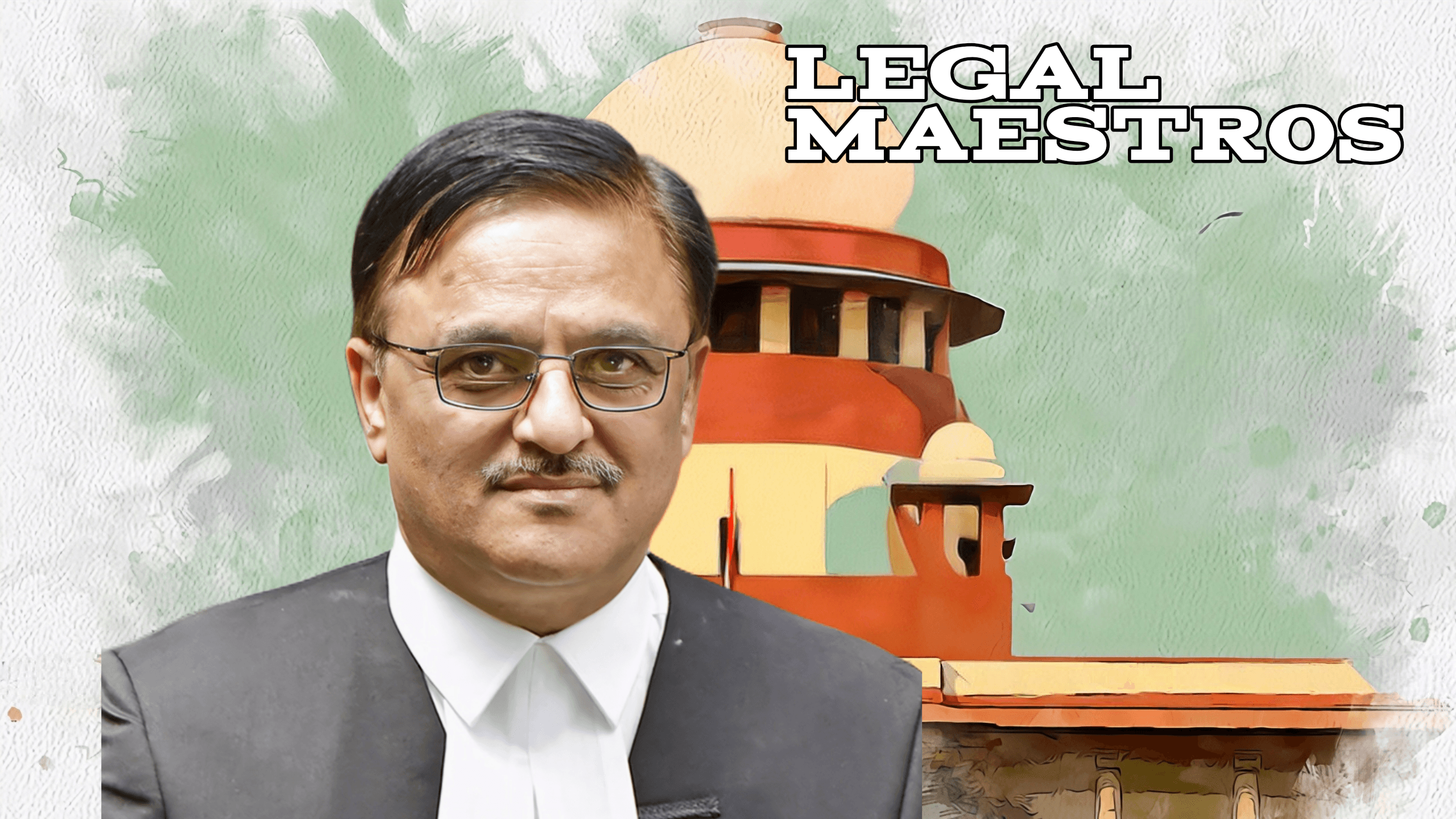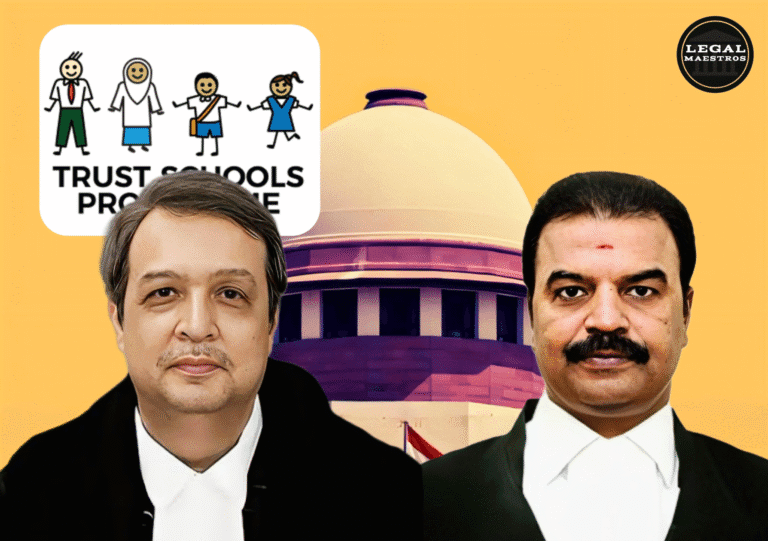
Sameer Sandhir v. Central Bureau of Investigation (Criminal Appeal Nos. 4718-4719 of 2024), which was resolved by the Supreme Court of India on May 23, 2025, concerns significant procedural problems governing the admissibility of evidence in a criminal trial after the chargesheet has been issued.
The case was brought before the court on May 23, 2025. In addition to offering clarification on the interpretation of Section 173(5) and 173(8) of the Code of Criminal Procedure, 1973 (CrPC), the judgment also comments on the required nature of supplying relied-upon papers in accordance with Section 207 of the Crops Criminal Procedure Code. The evidentiary requirements that pertain to electronic records are also discussed in this document. These criteria are outlined in Section 65B of the Indian Evidence Act of 1872.
A Concise Review of the Situation
In accordance with a number of provisions of the Prevention of Corruption Act of 1988 and Section 120-B of the Indian Penal Code of 1860, the appellant, Sameer Sandhir, who is also the seventh accused, is one of the individuals who will be taking part in the trial.
For any queries or to publish an article or post or advertisement on our platform, do call at +91 6377460764 or email us at contact@legalmaestros.com.
Following the filing of a First Information Report (FIR) on May 3, 2013, the Central Bureau of Investigation (CBI) submitted a chargesheet in July of that same year. The primary focus of this investigation is on two compact discs (CDs) that include intercepted telephone conversations that are said to give proof of corrupt behavior.
Despite the fact that the CDs were taken into custody at the beginning of May 2013 and were subsequently delivered to the Central Forensic Science Laboratory (CFSL) for forensic examination later that month, they were not included in the filing of the initial chargesheet or the supplementary chargesheet that was submitted in October 2013.
Although the CFSL report was included, the CDs themselves were not given to the court until a considerable amount of time had passed. When the prosecution attempted to introduce the CDs during the trial, the defense raised issues, mainly over the non-supply of the CDs and their delayed creation. The defense also voiced opposition to the introduction of the CDs.
For any queries or to publish an article or post or advertisement on our platform, do call at +91 6377460764 or email us at contact@legalmaestros.com.
For More Updates & Regular Notes Join Our Whats App Group (https://chat.whatsapp.com/DkucckgAEJbCtXwXr2yIt0) and Telegram Group ( https://t.me/legalmaestroeducators )
a matter of law
The fundamental legal point that was brought before the Supreme Court was whether or not the CDs, which were taken into custody prior to the filing of the chargesheet but were not included in the submission at that time, may be later presented as evidence during the trial under the cover of further investigation.
As a result, the scope and interpretation of Sections 173(5) and 173(8) of the Criminal Procedure Code, as well as the rights of the accused under Section 207 of the Criminal Procedure Code, were brought into sharper focus.
For any queries or to publish an article or post or advertisement on our platform, do call at +91 6377460764 or email us at contact@legalmaestros.com.
The Court’s Evaluation
The Court examined a number of previous cases in the law and provided its interpretation of the pertinent statutory requirements. It placed a significant amount of emphasis on the ratio decidendi in the case of CBI v. R.S. Pai (2002), which was a case in which the Supreme Court decided that even though Section 173(5) contains the word “shall,” the clause should be seen as directory rather than legally binding.
This indicates that the prosecution may be granted permission to provide additional papers even after the chargesheet has been submitted, in the event that there has been an accidental omission.
In addition, the Court took into consideration the case of Arjun Panditrao Khotkar v. Kailash Kushanrao Gorantyal (2020), which confirmed the R.S. Pai principle and stressed that such papers might be incorporated after the chargesheet has been filed if their omission was an error and if the accused is not harmed in any way.
For any queries or to publish an article or post or advertisement on our platform, do call at +91 6377460764 or email us at contact@legalmaestros.com.
In this particular instance, the focus was on ensuring that the accused is not denied a fair trial and that any fresh evidence must not be utilized to fill in any gaps in the prosecution’s case while the trial is in progress.
According to the decision in Mariam Fasihuddin v. State (2024), which emphasized that only “new material” gained via genuine further investigation can be included in a supplementary chargesheet in accordance with Section 173(8), the defense placed a significant amount of heavy reliance on this decision.
However, the Court made it clear that this judgment did not contradict R.S. Pai; rather, it only reiterated the fact that documents that were already in possession prior to the chargesheet cannot be presented as part of the investigation unless they were excluded by error.
For any queries or to publish an article or post or advertisement on our platform, do call at +91 6377460764 or email us at contact@legalmaestros.com.
The Court’s Proposed Decision
The verdict of the Delhi High Court was confirmed by the Supreme Court, which made it possible for the Central Bureau of Investigation to record the CDs. The court came to the conclusion that the subsequent submission of the CDs did not constitute an illegal supplementation of the evidence because they were mentioned in the supplementary chargesheet and were sent for forensic analysis prior to the filing of the original chargesheet.
In the middle of the trial, it was discovered that the failure to submit the CDs was not a deliberate attempt to unfairly strengthen the prosecution’s case; rather, it was an accident.
Therefore, the court decided that the CDs did not constitute “new” evidence because they had been a part of the investigation from the very beginning. As a result, the production of these items can be allowed at the discretion of the judge, without constituting a violation of the rights of the accused.
For any queries or to publish an article or post or advertisement on our platform, do call at +91 6377460764 or email us at contact@legalmaestros.com.
On the other hand, the court made it very plain that the admissibility and validity of the CDs would still need to be established during the trial, and that the defense would have the right to cross-examine important witnesses regarding this matter.
Key Concerns That Have Been Addressed by the Court
The interpretation of subsection 173(5) of the Criminal Procedure Code: According to the Court’s decision, the provision is merely advisory and not obligatory. This indicates that the inability to present all papers along with the chargesheet does not permanently preclude their inclusion in the future, provided that the court approves it and there is no prejudice caused.
Section 173(8) of the Criminal Procedure Code: the scope of further investigation The court made a distinction between evidence that was truly fresh and data that had been obtained in the past but accidentally left out of the investigation.
For any queries or to publish an article or post or advertisement on our platform, do call at +91 6377460764 or email us at contact@legalmaestros.com.
If the appropriate explanations are presented, it was determined that additional research is not required for the introduction of such material that was excluded.
Regarding the right to a fair trial and Section 207 of the Criminal Procedure Code, the court emphasized that the accused has the right to obtain all of the documents that the prosecution relies on.
In spite of the fact that the CDs were initially not included, the court ultimately decided to allow their inclusion on the condition that the defense be permitted to bring witnesses for cross-examination regarding the CDs.
For any queries or to publish an article or post or advertisement on our platform, do call at +91 6377460764 or email us at contact@legalmaestros.com.
Even though it was not the principal issue in the case, the court indicated that the matter of the validity of the Section 65B certificate and the authenticity of the CDs will be open for scrutiny during the trial.
This was despite the fact that the case did not involve electronic evidence. The careful attitude that the judiciary takes toward the admissibility of electronic evidence is reflected in this, as well.
In the case of Sameer Sandhir v. CBI, the judgment reaffirms the notion that procedural errors in the submission of evidence do not always constitute a vitiation of the trial if they are not deliberate and if they are addressed throughout the trial with transparency.
For any queries or to publish an article or post or advertisement on our platform, do call at +91 6377460764 or email us at contact@legalmaestros.com.
The Supreme Court stressed the importance of striking a balance between the obligation of the prosecution to provide all material that is pertinent to the case and the right of the accused to a trial that is both fair and transparent.
The court prevented a potentially unjust exclusion of significant evidence by affirming the directory nature of Section 173(5) and upholding the admissibility of the CDs. Additionally, the court protected the rights of the accused by allowing for adequate cross-examination at the same time.
When it comes to comprehending the flexible yet principled application of procedural criminal law in India, particularly with regard to electronic evidence and post-chargesheet modifications, this case serves as a key precedent.
For any queries or to publish an article or post or advertisement on our platform, do call at +91 6377460764 or email us at contact@legalmaestros.com.




![Research Assistantship @ Sahibnoor Singh Sindhu, [Remote; Stipend of Rs. 7.5k; Dec 2025 & Jan 2026]: Apply by Nov 14, 2025!](https://legalmaestros.com/wp-content/uploads/2025/11/Gemini_Generated_Image_s0k4u6s0k4u6s0k4-768x707.png)
![Karanjawala & Co Hiring Freshers for Legal Counsel [Immediate Joining; Full Time Position in Delhi]: Apply Now!](https://legalmaestros.com/wp-content/uploads/2025/11/Gemini_Generated_Image_52f8mg52f8mg52f8-768x711.png)
![Part-Time Legal Associate / Legal Intern @ Juris at Work [Remote]: Apply Now!](https://legalmaestros.com/wp-content/uploads/2025/11/ChatGPT-Image-Nov-12-2025-08_08_41-PM-768x768.png)
![JOB POST: Legal Content Manager at Lawctopus [3-7 Years PQE; Salary Upto Rs. 70k; Remote]: Rolling Applications!](https://legalmaestros.com/wp-content/uploads/2025/11/ChatGPT-Image-Nov-12-2025-08_01_56-PM-768x768.png)